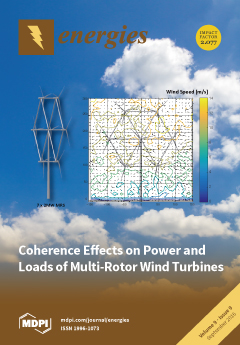This work presents some energy considerations concerning a biorefinery case study that has been carried out by the CRB/CIRIAF of the University of Perugia. The biorefinery is the case study of the BIT3G project, a national funded research project, and it uses the
[...] Read more.
This work presents some energy considerations concerning a biorefinery case study that has been carried out by the CRB/CIRIAF of the University of Perugia. The biorefinery is the case study of the BIT3G project, a national funded research project, and it uses the lignocellulosic biomass that is available in the territory as input materials for biochemical purposes, such as
cardoon and
carthamus. The whole plant is composed of several sections: the
cardoon and
carthamus seed milling, the oil refinement facilities, and the production section of some high quality biochemicals, i.e., bio-oils and fatty acids. The main goal of the research is to demonstrate energy autonomy of the latter section of the biorefinery, while only recovering energy from the residues resulting from the collection of the biomass. To this aim, this work presents the quantification of the energy requirements to be supplied to the considered biorefinery section, the mass flow, and the energy and chemical characterization of the biomass. Afterwards, some sustainability strategies have been qualitatively investigated in order to identify the best one to be used in this case study; the combined heat and power (CHP) technology. Two scenarios have been defined and presented: the first with 6 MWt thermal input and 1.2 MWe electrical power as an output and the second with 9 MWt thermal input and 1.8 MWe electrical power as an output. The first scenario showed that 11,000 tons of residual biomass could ensure the annual production of about 34,000 MWht, equal to about the 72% of the requirements, and about 9600 MWhe, equal to approximately 60% of the electricity demand. The second scenario showed that 18,000 tons of the residual biomass could ensure the total annual production of about 56,000 MWht, corresponding to more than 100% of the requirements, and about 14,400 MWhe, equal to approximately 90% of the electricity demand. In addition, the CO
2 emissions from the energy valorization section have been quantified and the possibility of re-using the CO
2 flow in order to produce methane is described.
Full article





